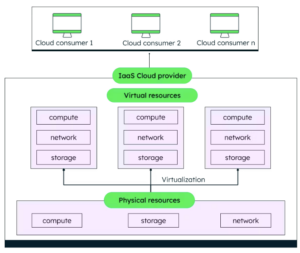Leveraging modern containerized platforms will improve your scalability, reliability and operational efficiency
Organizations saddled with monolithic legacy systems will struggle to maintain a competitive pace without modernizing their applications. Transitioning to cloud-native architectures enabled by containerized workloads will help them to release and scale new features more efficiently and reliably.
The push for app modernization
Application modernization keeps an organization current in a world of relentless digital advances. Many of your legacy applications may be holding your organization back and absorbing excessive resources to maintain them, but if they are business-critical and cannot be replaced or retired easily, you need to figure out a way to retain them without impeding your innovation.
App modernization injects your legacy applications with renewed agility by migrating them to a modern platform, reducing monoliths to smaller, more manageable components that are easier to maintain and streamlining them to integrate with new applications. A robust app modernization strategy allows you to safeguard your investments by harnessing contemporary technology to reduce the resources required to run your applications, boost the rate and reliability of deployment and increase uptime and resiliency.
However, not every application is a candidate for modernization. Replatforming or rearchitecting an application may bring benefits, but the complexity of decoupling it from existing systems and infrastructure might eclipse the merits to be gained. Successful app modernization is a question of strategy: The key is to select candidates for modernization whose potential for increased scalability, reliability and operational efficiency offer the greatest opportunities for business value.
The role of Kubernetes in modernizing applications
Kubernetes is inextricably linked with app modernization. Replatforming legacy applications onto the open source container orchestration platform enables new value and innovation – even in existing business-critical legacy applications. Deploying legacy applications in containers can eliminate obstacles to change and introduce new flexibility.
Combined with the DevOps principles of close collaboration and tight feedback loops between development and operations teams, it creates a foundation for continuous delivery and enhanced software delivery performance, with shorter release cycles and greater potential for the experimentation required for true innovation.
Kubernetes also enables security in the software supply chain by making it an integrated element of the application lifecycle. The stack is secured from operating system through to application, which helps optimize application availability, scalability and performance. A Kubernetes platform is the basis for many of the interconnected technologies associated with application modernization, including automation, microservices and cloud services.
Where APIs fit in
The API layer serves as a buffer between your legacy systems and the frontend, ensuring frontend functionality by routing requests as the legacy services are migrated or rebuilt. Modernizing applications is faster because APIs unlock legacy data and applications and allow them to be consumed by new cloud services.
The beauty of APIs is the way they integrate data, applications and devices across your IT organization, enabling all of your technologies to communicate and work together with ease. If your technologies cannot communicate with each other, you waste time and money.
Refactoring and re-architecting
The most advanced pattern of cloud migration involves refactoring and re-architecting applications. Generally inspired by a compelling business need to scale or enhance features and performance, the approach involves a cloud-centric rebuild of your application stack. This enables cloud-native functionality that is simply not available in the application’s legacy environment.
Refactoring and re-architecting your applications incurs significant costs, but this approach also delivers optimum results for companies seeking to abandon monolithic architecture in favor of a service-oriented (or serverless) architecture to enhance their agility or business continuity.
Monolithic applications do not have to be broken down all at once: The “Strangler pattern” involves adding external replacement services over time to an existing system behind an intermediary facade. That facade is the functional entry point to the existing system, but it is modified to redirect calls to the new service once it becomes operational. Ultimately, the new services “strangle” the services in the old system. This approach reduces overall risk by introducing transformation to the system incrementally.
Recommended approaches to app modernization
A containerized deployment model is widely considered to be the best approach for migrating and evolving aging applications onto agile, cloud-native architectures, so that you can reliably respond to ever-changing business environments. But where do you start?
At DoiT, our team of cloud architects and engineers has helped many organizations modernize their application stacks to align with cloud-native design principles. They guide customers as they move to containerized deployment models designed to leverage modern platforms like Elastic Kubernetes Service (EKS) and improve scalability, reliability and operational efficiency. Our approach incorporates architecture assessment, architecture scoping, recommendations for best practices and expert support.
Architecture assessment
Our expert cloud architects will assess your architecture to form an understanding of your application blueprints and the services consumed. They will identify and address vulnerabilities as they consider what you will need to create a high-performing, secure, dependable and efficient infrastructure.
Architecture scoping
With the assessment complete, we will formulate a plan for a new proposed architecture. This will include a high-level roadmap for your team to follow in the drive toward modernization. Your roadmap will outline the path you need to follow to transition to a modern infrastructure, giving you a solid framework for transforming your legacy applications into modern, secure, scalable systems.
Recommendations for best practices
As you consider your path forward, we will equip you with professional recommendations for the best tools, platforms and methodologies to use in your modernization effort. You will receive sample code templates for infrastructure setup, using Infrastructure as Code (IaC) tools.
Expert support
Launching a containerization effort can feel like a giant leap for organizations accustomed to working with monolithic legacy systems, and it does represent a huge shift in the way your organization functions.
However, armed with a roadmap and recommendations for best practices tailored to your specific needs, you are far more likely to reap the rewards. Combine these resources with highly-specialized support for your containerization effort and you are primed for success. DoiT will guide you on best practices in Dockerization and provide full support for your engineering team via our Technical Advisory Service.
Next steps
Harnessing cloud-native design principles to modernize your business-critical legacy applications will make your organization more agile, efficient and innovative, but getting it right requires a shrewd strategy and deep expertise. Engaging with a partner like DoiT will help you ensure your strategy is appropriate for your specific business objectives and steer you to a path to success.


